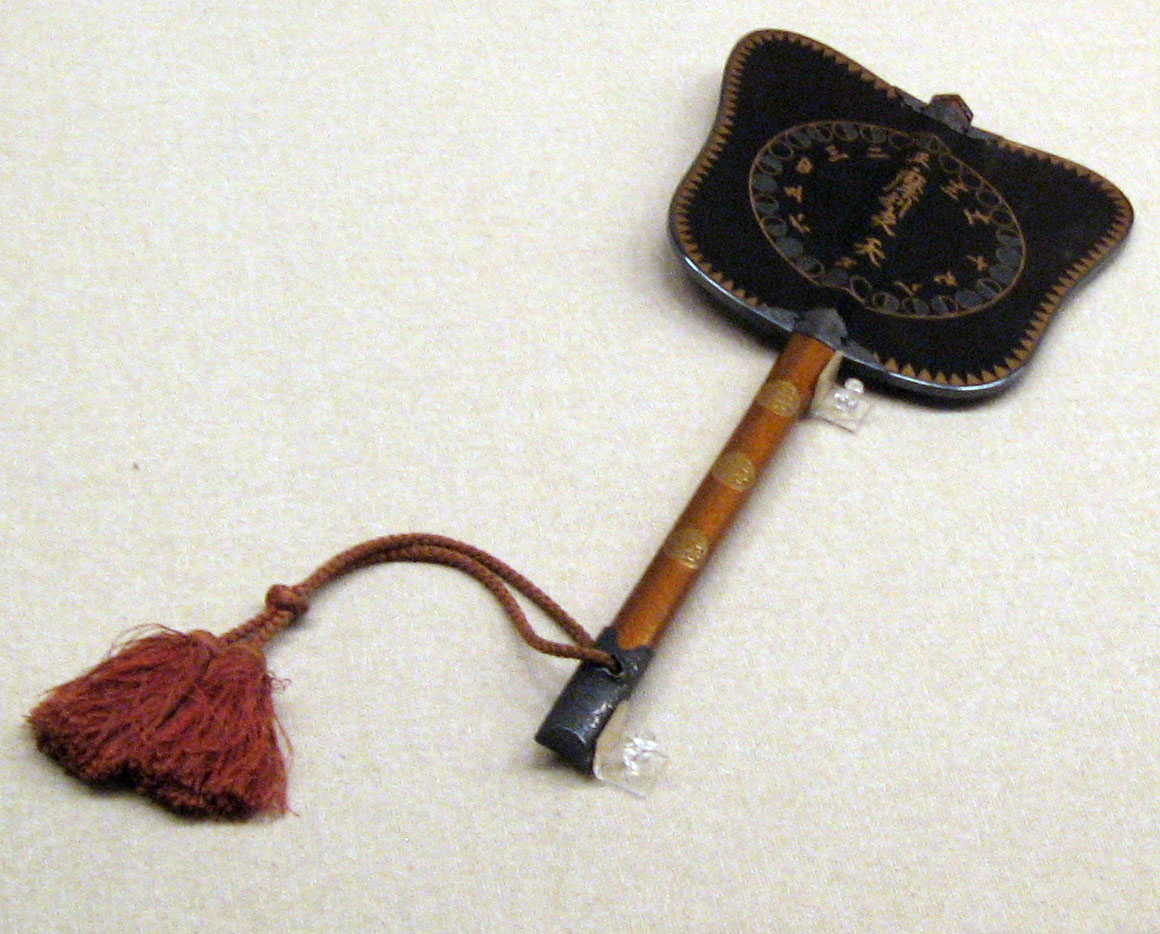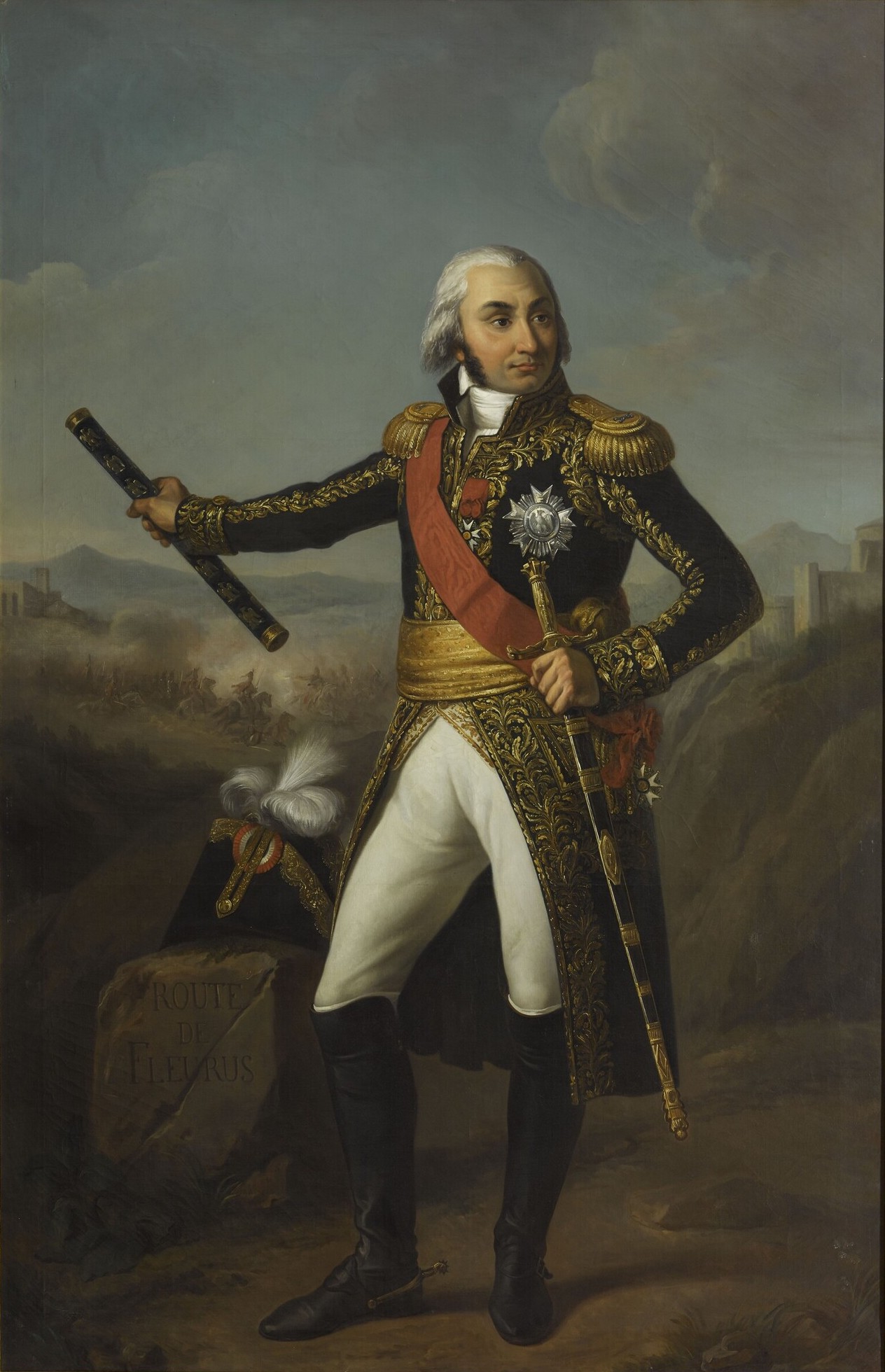|
Gunbai
The is a type of signal baton and Japanese war fan. Once held by military leaders (such as daimyō) and priests in the past, it is used in the modern day by umpires in sumo wrestling. Description ''Gunbai'', from the Sino-Japanese roots meaning "military-apportioned an, were a specialized form of fan used by samurai officers in Japan to communicate commands to their troops. Unlike regular fans, ''gunbai'' were solid, not folding, and usually made of wood, wood covered with metal, or solid metal. It is also a key accessory of a ''gyōji'' (referee) in professional sumo. The main use is at the end of a bout, when the ''gyoji'' decides the victor and points the ''gunbai'' to either the east or west position (each wrestler is assigned to start from either the east or west position each tournament day). Reflecting this, the gyōji's decision itself is often informally referred to as a ''"gunbai"''. If this is called into question and the judges hold a consultation, a decision ... [...More Info...] [...Related Items...] OR: [Wikipedia] [Google] [Baidu] |
Japanese War Fan
The Japanese war fan, or ''tessen'' ( ja, 鉄扇,てっせん, tessen, translation="iron fan"), is a weaponized Japanese hand fan designed for use in warfare. Several types of war fans were used by the samurai class of feudal Japan and each had a different look and purpose. Description War fans varied in size, materials, shape, and use. One of the most significant uses was as a signalling device. Signalling fans came in two varieties: * a folding fan that has wood or metal ribs with lacquered paper attached to the ribs and a metal outer cover * a solid open fan made from metal and/or wood, very similar to the ''gunbai'' used today by sumo referees. The commander would raise or lower his fan and point in different ways to issue commands to the soldiers, which would then be passed on by other forms of Military Communication of Feudal Japan, visible and audible signalling.Oscar Ratti, Adele Westbrook, ''Secrets of the Samurai: A Survey of the Martial Arts of Feudal Japan'', p.296-3 ... [...More Info...] [...Related Items...] OR: [Wikipedia] [Google] [Baidu] |
Saihai
A was a baton carried by samurai commanders in feudal Japan, now used by Kannushi in formal settings. The saihai or sai-hai was a sign of rank and a signal device. Appearance and use A saihai usually consisted of a lacquered wood stick with metal ends. The butt had a hole for a cord for the saihai to be hung from the armor of the samurai when not being used. The head of the saihai had a hole with a cord attached to a tassel of strips of lacquered paper, leather, cloth or yak hair. The saihai first came into use during the 1570s and the 1590s between the Genki and Tensho year periods. Large troop movements and improved and varied tactics required commanders in the rear to be able to signal their troops during a battle.Russo-Japanese war, Volume 3 A.T.Mahan Publisher Kinkodo pub. co., 1905 p.911 Gallery File:Saihai.JPG, Edo period commanders baton "saihai" with a yaks hair tassle. File:Saihai 1.JPG, Japanese ( samurai ) commanders signal baton "saihai" with leather tassels. File ... [...More Info...] [...Related Items...] OR: [Wikipedia] [Google] [Baidu] |
Baton (symbol)
The ceremonial baton is a short, thick stick-like object, typically in wood or metal, that is traditionally the sign of a field marshal or a similar high-ranking military officer, and carried as a piece of their uniform. The baton is distinguished from the swagger stick in being thicker and effectively without any practical function. A staff of office is rested on the ground; a baton is not. Unlike a royal sceptre that is crowned on one end with an eagle or globe, a baton is typically flat-ended. Origins The baton can most likely be traced back to the mace, with ancient Kings and Pharaohs often being buried with ceremonial maces. With the advent of primitive body armor, the mace went out of fashion, but made a comeback as an effective weapon against full plate armour during the Late Middle Ages. During this time, the staff of office also became a prominent symbol of power. By the time of Louis X of France, it was common for sergeants-at-arms to carry highly ornamented ... [...More Info...] [...Related Items...] OR: [Wikipedia] [Google] [Baidu] |
Shaku (ritual Baton)
A () is a flat scepter originating from China, where they were originally used as narrow tablets for recording notes and orders. They were historically used by officials throughout East Asia, including Japan, Korea, Ryukyu, and Vietnam. They are known as in Japan, and are worn as part of the ceremonial outfit. They continue to be used in daoist and shinto ritual contexts in some parts of East Asia. Origin The use of the originated in ancient China, where the ''Classic of Rites'' required a to have a length of two six , and its mid part a width of three (). Originally, the was held by officials in court to record significant orders and instructions by the emperors. From the Jin dynasty onwards, following the increased proliferation of paper, the became a ceremonial instrument. In China, it was customary to hold the with the broad end down and the narrow end up. The was originally used at court for the taking of notes and was usually made of bamboo. Officials could r ... [...More Info...] [...Related Items...] OR: [Wikipedia] [Google] [Baidu] |
Ōnusa
An or simply is a wooden wand traditionally used in Shinto ritual purification, purification rituals. are decorated with a number of (paper streamers). When the are attached to a hexagonal or octagonal staff, the wand is also known as a . See also * Flail * Glossary of Shinto * * * * * References * ''Encyclopedia of Shinto''"Ōnusa" accessed on March 29, 2009. Ceremonial weapons Exorcism in Shinto Honorary weapons Ritual weapons Shinto cult objects Shinto in Japan Wands {{Shinto-stub ... [...More Info...] [...Related Items...] OR: [Wikipedia] [Google] [Baidu] |
Gohei
, , or are wooden wands, decorated with two (zigzagging paper streamers) used in Shinto rituals. The streamers are usually white, although they can also be gold, silver, or a mixture of several colors, and are often attached as decorations to straw ropes () used to mark sacred precincts. The shrine priest or attendants () use the to bless or sanctify a person or object in various Shinto rituals. The is used for some ceremonies, but its usual purpose is to cleanse a sacred place in temples and to cleanse, bless, or exorcise any object that is thought to have negative energy. In addition to its use in purification rituals, it may be included in an (wooden wand with many ), and serve as the object of veneration () in a Shinto shrine. See also * Flail * Glossary of Shinto for an explanation of terms concerning Japanese Shinto, Shinto art, and Shinto shrine architecture. * , wooden wands used in Ainu rituals * * Ruyi (scepter) Ruyi () is a Chinese curved decorative obj ... [...More Info...] [...Related Items...] OR: [Wikipedia] [Google] [Baidu] |
:Category:Japanese Words And Phrases ...
{{Commons Words and phrases by language Words Words Words A word is a basic element of language that carries an objective or practical meaning, can be used on its own, and is uninterruptible. Despite the fact that language speakers often have an intuitive grasp of what a word is, there is no consen ... [...More Info...] [...Related Items...] OR: [Wikipedia] [Google] [Baidu] |
Japanese Words And Phrases
Japanese may refer to: * Something from or related to Japan, an island country in East Asia * Japanese language, spoken mainly in Japan * Japanese people, the ethnic group that identifies with Japan through ancestry or culture ** Japanese diaspora, Japanese emigrants and their descendants around the world * Japanese citizens, nationals of Japan under Japanese nationality law ** Foreign-born Japanese, naturalized citizens of Japan * Japanese writing system, consisting of kanji and kana * Japanese cuisine, the food and food culture of Japan See also * List of Japanese people * * Japonica (other) * Japonicum * Japonicus * Japanese studies Japanese studies (Japanese: ) or Japan studies (sometimes Japanology in Europe), is a sub-field of area studies or East Asian studies involved in social sciences and humanities research on Japan. It incorporates fields such as the study of Japanese ... {{disambiguation Language and nationality disambiguation pages ... [...More Info...] [...Related Items...] OR: [Wikipedia] [Google] [Baidu] |
Ventilation Fans
Ventilation may refer to: * Ventilation (physiology), the movement of air between the environment and the lungs via inhalation and exhalation ** Mechanical ventilation, in medicine, using artificial methods to assist breathing *** Ventilator, a machine designed to move breathable air into and out of the lungs * Ventilation (architecture), the process of "changing" or replacing air in any space to provide high indoor air quality * Ventilation (firefighting), the expulsion of heat and smoke from a fire building * Ventilation (mining), flow of air to the underground workings of a mine of sufficient volume to dilute and remove noxious gases See also * Heating, ventilation, and air conditioning, the technology of indoor and vehicular environmental comfort * Mechanical fan * Reebok Ventilator Reebok Ventilator is a line of athletic shoes by Reebok. The footwear was first introduced in 1990 as a lightweight sneaker with vented side panels. The Ventilators focused on "breathability" wi ... [...More Info...] [...Related Items...] OR: [Wikipedia] [Google] [Baidu] |
Sumo Terminology
is a form of competitive full-contact wrestling where a ''rikishi'' (wrestler) attempts to force his opponent out of a circular ring (''dohyō'') or into touching the ground with any body part other than the soles of his feet (usually by throwing, shoving or pushing him down). Sumo originated in Japan, the only country where it is practiced professionally and where it is considered the national sport. It is considered a ''gendai budō'', which refers to modern Japanese martial arts, but the sport has a history spanning many centuries. Many ancient traditions have been preserved in sumo, and even today the sport includes many ritual elements, such as the use of salt purification, from Shinto. Life as a wrestler is highly regimented, with rules regulated by the Japan Sumo Association. Most sumo wrestlers are required to live in communal sumo training stables, known in Japanese as ''heya'', where all aspects of their daily lives—from meals to their manner of dress—are dict ... [...More Info...] [...Related Items...] OR: [Wikipedia] [Google] [Baidu] |
Military Communication In Feudal Japan
A variety of procedures were used to communicate across the battlefield in feudal Japan, much like in any other culture. These methods included visual signals like flags and banners and audible signals using drums and horns. Messengers on horseback used ciphers and other methods to prevent their messages from falling into the wrong hands. By the beginning of the Sengoku Period, battlefield communications had become fairly complicated affairs, with larger armies than ever before, and a multitude of flags and banners covered in a myriad of colors and designs. Flags and banners Since the beginnings of what we would today recognize as Japanese culture, and probably earlier, various symbols, crests, banners, or markings on armor were used to help identify and distinguish warriors on the battlefield. The '' mon'', or symbol, of a clan or a ''daimyō'' was particularly common, identifying which side a warrior fought on; some samurai used their own names or ''mon'' rather than that of thei ... [...More Info...] [...Related Items...] OR: [Wikipedia] [Google] [Baidu] |

.jpg)



